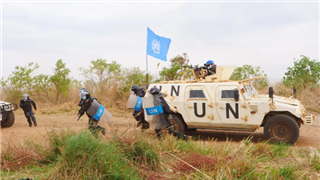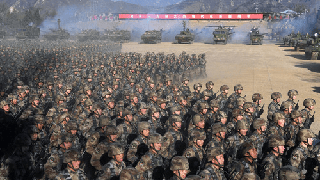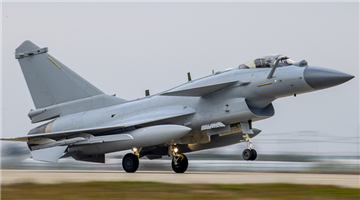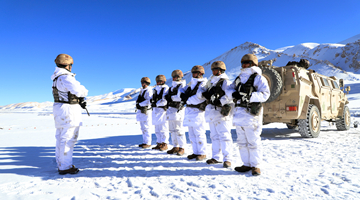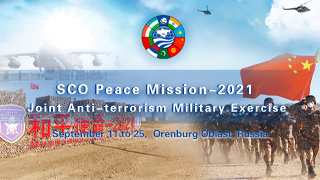王昌凡
By Wang Changfan
据美国国防部消息,1月5日至15日,美国、澳大利亚、加拿大、日本、韩国和印度,在太平洋关岛的安德森空军基地附近海域开展代号为“海龙-22”联合反潜演习,引发外界普遍关注。
News came from the US navy that the US, Australia, Canada, Japan, ROK and India carried out the Sea Dragon 22 multi-national anti-submarine exercise in waters near the Andersen Air Force Base in Guam from January 5 to 15,which drew close attention from the international community.
“海龙”年度演习自2019年起,每年举行一次,起初只有美国和澳大利亚两国联演,尔后加拿大、新西兰、日本、韩国、印度等国陆续参与。
The Sea Dragon exercise, which is held annually since 2019, involved only the US and Australia at first but was later joined by several other countries including Canada, New Zealand, Japan, ROK and India.
今年演习中各国现役主战装备聚集,美国海军P-8A、澳大利亚P-8A、印度P-8I、日本P1、韩国P-3C和加拿大CP-140等反潜机悉数登场。演习主要分为陆上训练、跟踪模拟目标和跟踪潜艇3个部分进行。参演的飞行员训练和演习总时长达270小时,参演各国依据自身装备制定战术计划,实战化程度高。
This year’s exercise gathered the main battle equipment from all participants, such as the US Navy’s P-8A, Australia’s P-8A, India’s P-8I, Japan’s P1, ROK’s P-3C, Canada’s CP-140, and other anti-submarine aircraft. Land training, simulated targets tracking and actual submarine tracking training are all included, in which the participating pilots will culminate in over 270 hours of in-flight training, and all countries involved build plans and discuss tactics to coordinate the equipment capabilities, making it be high-end real-combat exercise.
“海龙-22”演习作为美国今年组织的首个多国联合反潜演习,无论从参演装备数量和性能上,还是从演习内容设置来看,均代表当前航空反潜的一定技术水平。美国试图通过此次演习对亚太地区潜在对手进行战略威慑,进一步强化美日印澳“四国机制”的军事合作。印度、韩国等国借助演习也各怀心思。
The Sea Dragon 22 exercise, the first multilateral anti-submarine exercise organized by the US this year, represented a fairly high level of air-based anti-submarine performance both in terms of the quantity and quality of participating equipment, as well as the setting of exercise scenarios. The US intended to stage the exercise to impose strategic deterrence on potential rivals in the Asian-Pacific region and further solidify the military cooperation within the US-Japan-India-Australia Quad, while countries like India and ROK also have their own axes to grind.
美国连续4年在亚太地区牵头组织多国联合反潜演习,以“自由”之名不断升级演习强度、扩大演习规模,依托“海龙”年度演习渲染军事威胁、扰乱地区局势,声称“确保美国及其盟友在亚太地区的航行自由和商业活动自由”,实际却有多重意图。
The US has initiated multilateral anti-submarine exercises in the Asia Pacific for four consecutive years, with intensity and scale continuously escalating in the name of “freedom”. It has hyped up military threats and roiled the regional situation through the Sea Dragon exercise, which it claimed was intended to ensure the freedom of navigation and freedom of commercial activities of the US and its allies in the Asian-Pacific region, but that is just an excuse to cover up its ulterior motives.
一是展示美国及其盟友伙伴的航空反潜实力。美国一直忌惮潜在对手的潜艇对美国舰队和制海权的威胁,并长期致力于反潜新技术和新战术的研究。航空反潜凭借其高机动、大范围、强威力等特点,一直是反潜的主力军。近年来,潜在对手的潜艇实力不断增强,对美军的反潜能力提出了更大挑战。“海龙”年度演习就是美军针对新情况,模拟实战进行的针对性演练,旨在给对手展示其强大的航空反潜能力,展示其对周边海域的控制力。
First, it wants to showcase the air-based anti-submarine strengths of the US and its allies and partners. America, guarded against threats posed by potential rival’s submarines to the American fleet and naval supremacy, has been studying new anti-submarine technologies and tactics, for which airborne anti-submarine has been the leading force for its high maneuverability, extensive scope and strong deterrence. In recent years, the growing capabilities of potential rival’s submarines have seriously challenged the US Navy’s anti-submarine performance. In view of this new situation, the annual Sea Dragon exercise is a targeted move launched to simulate real-combat scenarios, with the aim to demonstrate to the rivals America’s robust airborne anti-submarine capability and its control over surrounding waters.
二是增强美国与盟友伙伴间的协作能力。美军反潜机虽然先进,但数量和作战半径有限,需要盟友伙伴的支持与配合。然而,美国海军和盟友伙伴的航空反潜装备,在技术参数、通信链路和作战程序上有所区别。为达到协作效果,扩大反潜机协同网络的控制范围,美国海军在演习中一方面鼓励各国根据自身装备制定战术,另一方面着重加强战术指挥层面的协同与合作。同时,美国希望以演代训,为盟友伙伴的反潜机飞行员培训技能。
Second, it wants to improve the coordination with allies and partners. Advanced as it is, the American anti-submarine aircraft needs support and coordination from the allies and partners due to its own limited quantity and combat radius, but their airborne anti-submarine equipment varies in technical parameters, communication links, and combat procedures. Therefore, to enhance coordination and enlarge the control expanse of the coordinated network of anti-submarine aircraft, the US Navy encouraged the participating countries to work out tactics based on their own equipment on the one hand and emphasized coordination and cooperation on the tactical command level on the other. It also hoped to use the exercise as a training session to train the allies and partners’ pilots flying anti-submarine aircraft.
三是配合扩大对外军售。此次演习既是美国展示实力的舞台,也是其兜售武器的展台。印度在参加2021年“海龙”演习后,增购了6架美国P-8I反潜机。韩国在多次参加演习后,计划于2024年前购买8架P-8K反潜机。澳大利亚和新西兰均是P-8反潜机的客户。美国在增加自身反潜机数量的同时,一直期望盟友继续购买更多的P-8反潜机,以实现亚太区域的全覆盖。
Third, it wants to increase arms sales overseas. The exercise was not just a stage for show-off, but also a showroom of weapons. India bought an additional six P-8Is after participating in the Sea Dragon 21 exercise; ROK plans to buy eight P-8Ks by 2024 after participating in the exercise many times; Australia and New Zealand are both P-8 buyers. While expanding its own fleet of anti-submarine aircraft, the US always hopes its allies will continue buying more P-8 aircraft in order to cover the entire Asian-Pacific region.


